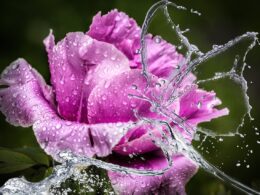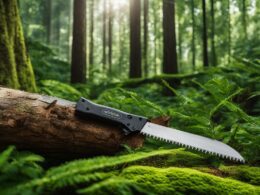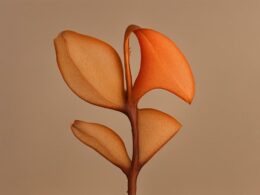Do you know the difference between topsoil and garden soil? While they may seem like similar products, there are key differences that can greatly affect the success of your gardening endeavors.
Topsoil is the uppermost layer of soil, typically the first six inches, and is composed of minerals, organic matter, and living organisms.
Garden soil, on the other hand, is a mixture of topsoil, compost, and other organic materials that have been specifically formulated for growing plants.
Understanding the composition of topsoil and garden soil is important in determining which product is best for your gardening needs. While both contain minerals and organic matter, the texture and nutrient content can vary greatly.
Topsoil tends to be heavier and more compact, with a higher concentration of clay particles. Garden soil, on the other hand, is typically lighter and more porous, allowing for better drainage and root growth.
Additionally, garden soil may contain higher levels of key nutrients such as nitrogen, phosphorus, and potassium, which are essential for plant growth and development.
Definition and Composition of Topsoil
You’re going to learn all about what makes up the topsoil, including its composition and essential components for a healthy garden.
Topsoil is the uppermost layer of soil, typically about 2 to 8 inches deep. It’s composed of a mixture of organic matter, minerals, water, and air. This layer is critical for plant growth, as it provides the necessary nutrients, water, and support for roots to thrive.
Soil structure is an essential component of topsoil. It’s the way in which soil particles are arranged and grouped together. Good soil structure allows for air and water movement, which is essential for healthy plant growth. Poor soil structure can lead to waterlogged soil, which can cause root rot and other plant diseases.
Before planting, soil testing should be done to determine the soil structure and any necessary amendments to be made.
In summary, topsoil is the uppermost layer of soil that contains essential components for plant growth. Soil structure is crucial for healthy plant growth, and soil testing should be done to determine the soil structure and any necessary amendments. By understanding the composition of topsoil and how it affects plant growth, you’ll be better equipped to create a thriving garden.
Definition and Composition of Garden Soil
The earthy aroma of freshly tilled soil fills the air as we examine the composition of garden soil. Garden soil is different from topsoil because it’s specifically formulated for growing plants.
Here are three things you need to know about garden soil:
-
Types of Plants: Garden soil is designed to cater to the specific needs of different types of plants. Some plants prefer acidic soil, while others thrive in alkaline soil. Garden soil can be customized to meet the unique requirements of your plants, which is why it’s an essential component for successful gardening.
-
Soil Testing: Before planting anything, it’s crucial to test the soil for its composition. Garden soil is tested for pH levels, nutrient content, and organic matter. This testing helps determine the appropriate amount of fertilizer or compost to add to the soil, ensuring that the plants get the right nutrients to grow healthy and strong.
-
Composition: Garden soil is made up of a combination of topsoil, compost, peat moss, and other organic matter. This mixture provides a balanced combination of nutrients, moisture retention, and aeration that plants need to thrive. The organic matter in garden soil also helps improve soil structure, making it easier for plant roots to grow and absorb nutrients.
By understanding the unique composition of garden soil and its importance in growing healthy plants, you can create an ideal environment for your plants to thrive. So, before you start planting, make sure you have the right garden soil for your plants, and always test the soil to ensure you’re providing the best possible growing conditions.
What Are the Identification Tips for Distinguishing Tuberous and Fibrous Begonias?
Are you a plant enthusiast? Here are some quick tips for identifying tuberous or fibrous begonias. Tuberous begonias usually have large, showy flowers, and their leaves often feel waxy or succulent. In contrast, fibrous begonias have smaller, simpler flowers, and their leaves are typically softer and thinner. Observing the size and texture of the flowers and leaves can help you distinguish between these two begonia varieties.
Differences in Texture and Nutrient Content
You’ll be amazed at how much texture and nutrient content can vary in the soil you use for your plants, so it’s important to understand what you’re working with.
Garden soil tends to have a looser texture and is ideal for planting vegetables and flowers. It’s also rich in nutrients and organic matter, which means it’s great for promoting growth.
On the other hand, topsoil is denser and has a higher clay content. This means that it can retain more water and nutrients, making it perfect for plants that require more moisture and nutrients. However, because it’s not as rich in organic matter, it may need to be supplemented with compost or other fertilizers to promote healthy growth.
Texture variations and nutrient disparities can also affect how well your plants grow. For example, if your soil is too dense, it can make it difficult for roots to penetrate and absorb nutrients. Conversely, if your soil is too loose, it may not retain enough moisture, which can cause your plants to wilt.
By understanding the differences between topsoil and garden soil, you can ensure that you’re using the right soil for your plants and giving them the best chance to thrive.
Best Uses for Topsoil and Garden Soil
If you want to ensure your plants are getting the right texture and nutrients for their specific needs, it’s important to understand the best uses for the different types of soil available. Topsoil and garden soil have different uses and benefits, and knowing which one to use can make a big difference in the success of your garden.
Here are some uses comparison and benefits analysis of topsoil and garden soil:
-
Topsoil is best used for filling in low spots in your yard or garden, or for creating new garden beds. It’s also great for adding a layer of fresh soil to an existing garden bed. Topsoil is rich in nutrients and organic matter, making it ideal for plants that need a lot of nutrients to thrive.
-
Garden soil, on the other hand, is specifically formulated for growing plants. It’s a blend of topsoil, compost, and other organic materials, and is designed to provide the perfect balance of nutrients and texture for plants. Garden soil is best used for planting in containers, raised beds, or directly in the ground.
-
Using topsoil in containers or raised beds can lead to drainage problems, as it’s not designed to hold water like garden soil is. Garden soil is also more expensive than topsoil, so it’s not the best choice for filling in low spots or creating new garden beds.
In summary, understanding the uses and benefits of topsoil and garden soil can help you make the right choice for your garden. Whether you’re filling in low spots, creating new garden beds, or planting in containers, choosing the right soil can make all the difference in the success of your plants.
Can Yellow Mold in Soil Affect the Quality of Topsoil and Garden Soil?
The causes of yellow mold in soil can affect the quality of topsoil and garden soil. This type of mold can compete with plants for nutrients, water, and space, leading to poor soil quality. Additionally, it can decrease the overall health and productivity of the garden environment.
Choosing the Right Soil for Your Gardening Needs
You can create the lushest, most beautiful garden of your dreams by selecting the perfect soil to suit your unique gardening needs. When it comes to choosing the right soil, it’s important to understand the difference between topsoil and garden soil.
Topsoil is generally used for large-scale projects like landscaping and grading, while garden soil is specifically formulated for growing plants in containers or raised beds.
If you’re planning to do container gardening, it’s important to choose a soil that provides the necessary nutrients and moisture retention for your plants. Look for a high-quality potting soil that is specifically designed for container gardening. This type of soil is usually lightweight, well-draining, and rich in organic matter.
Raised bed gardening requires a different type of soil altogether. Because raised beds are often filled with soil that is not native to your area, it’s important to choose a soil that is specifically formulated for raised bed gardening. Look for a soil that is rich in organic matter, well-draining, and has a balanced pH level.
By choosing the right soil for your gardening needs, you can ensure that your plants thrive and your garden looks beautiful all season long.
Frequently Asked Questions
Can topsoil or garden soil be used for indoor plants?
If you’re looking to maintain your indoor plants, it’s important to choose the right soil. Both topsoil and garden soil can be used, but it’s important to consider the moisture levels.
Indoor plants need soil that retains moisture, but not too much that it becomes waterlogged. Garden soil may have too much organic matter and may not be the best choice for indoor plants.
Topsoil, on the other hand, is a great option as it has a balanced mix of organic and inorganic matter. Make sure to monitor the moisture levels regularly and adjust accordingly to ensure your indoor plants thrive.
Are there any harmful chemicals or pesticides in topsoil or garden soil?
Before using topsoil or garden soil, it’s important to consider the potential presence of harmful chemicals and pesticides. These contaminants can have a negative impact on the health of your indoor plants, and potentially your own health as well.
Soil testing for chemical contamination can help identify any harmful substances present in the soil, and allow for proper remediation measures to be taken. It’s always better to be safe than sorry when it comes to the health of your plants and yourself.
So, be sure to test your soil before using it for your indoor garden.
Can topsoil or garden soil be used for growing vegetables?
If you’re looking to grow vegetables, the key to success lies in the growing conditions and soil preparation. Garden soil and topsoil are both great options for growing vegetables, but you need to make sure you’re using the right kind and preparing it properly.
When it comes to soil preparation, you want to make sure you’re removing any weeds or debris from the area and loosening the soil to improve drainage. You should also consider adding organic matter like compost or manure to improve the soil’s fertility.
Once you’ve prepared the soil, you can plant your vegetables and watch them thrive in their new home! Just be sure to monitor their growth and provide them with the proper care to ensure they reach their full potential.
How often should topsoil or garden soil be replaced in a garden?
To keep your garden healthy and thriving, it’s important to know when to replace your topsoil or garden soil.
Over time, soil can become compacted, depleted of nutrients, and unable to drain properly. If your plants are struggling to grow or look unhealthy, it may be time for a soil change.
It’s generally recommended to replace soil every 3-5 years, but this can vary depending on factors like climate, soil type, and how frequently you fertilize.
To tell if your soil needs to be replaced, look for signs like excessive weed growth, water pooling on the surface, or a sour smell.
To improve your soil’s drainage and fertility, consider adding compost, mulch, or other organic matter. By enhancing the quality of your soil, you’ll be able to enjoy a thriving garden for years to come.
Is it possible to improve the nutrient content of topsoil or garden soil?
If you want to improve the nutrient content of your topsoil or garden soil, there are several soil improvement techniques you can try.
One effective method is to add organic soil amendments, such as compost or manure. These amendments provide essential nutrients to the soil, improving its fertility and promoting healthy plant growth. Additionally, they can help improve the soil’s texture and water-holding capacity, making it more resistant to erosion and drought.
When adding organic amendments, it’s important to mix them thoroughly into the soil to ensure even distribution.
With these simple soil improvement techniques, you can enhance the quality of your garden soil and promote a healthy, thriving garden.
Conclusion
Now that you know the difference between topsoil and garden soil, you can make an informed decision on which one to use in your gardening endeavors.
Topsoil is primarily used for filling in holes and leveling areas, while garden soil is perfect for growing plants and vegetables.
When choosing the right soil for your gardening needs, consider the texture and nutrient content of each type. If you need a high-nutrient soil for your plants, garden soil may be the better option. However, if you’re looking to level out an area in your yard or fill in a hole, topsoil may be the way to go.
With this knowledge, your gardening adventures are sure to be a success!







